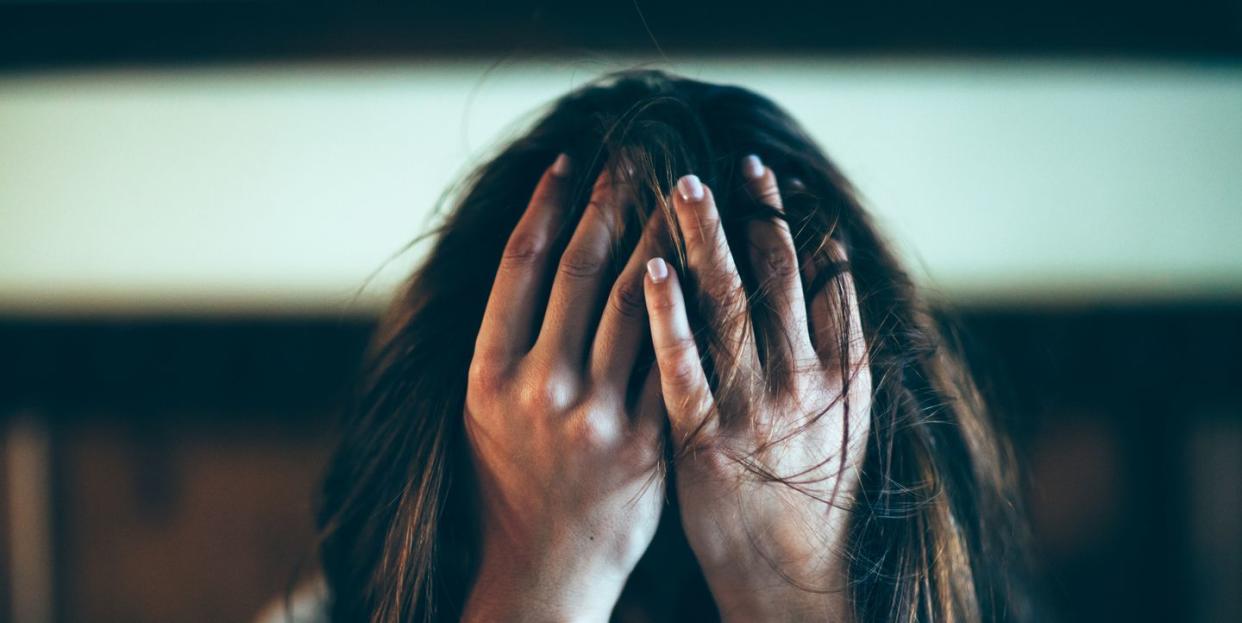U.S. Preventive Services Task Force Now Recommends Anxiety Screenings for People Under 65

"Hearst Magazines and Yahoo may earn commission or revenue on some items through the links below."
A major panel of medical experts in the U.S. has issued a recommendation that all adults under 65 be screened at their doctor’s office for anxiety. The group, which is called the U.S. Preventive Services Task Force (USPSTF), issued the draft recommendation on Tuesday, months after issuing a similar recommendation for children and teens.
The USPSTF cited data collected from 2001 to 2002 that found the lifetime prevalence of anxiety disorders in adults was 26.4% for men and 40.4% for women. Generalized anxiety disorder, which is severe, ongoing anxiety that interferes with daily activities, happens in up to 10.5% of patients during pregnancy and up to 10.8% of patients in the postpartum period, the guidance says.
The recommendation is a draft at the point, which means that it will be open to public comment before the panel makes a finalized recommendation. But a draft recommendation usually means it will become an “official” recommendation at some point—and that you may end up being screened at your primary care physician at some point in the near future.
Here’s what you need to know about the recommendation, and why it’s happening now.
What the anxiety screening recommendations say
The guidance is a little vague at this point. “The USPSTF recommends screening for anxiety in adults, including pregnant and postpartum persons,” the recommendation says.
For people 65 and older, the agency concluded that “the current evidence is insufficient to assess the balance of benefits and harms of screening for anxiety in older adults.”
Why is this recommendation being issued now?
Anxiety disorders are the most common mental health concern in the U.S., according to the National Alliance on Mental Illness (NAMI). More than 40 million adults in the U.S. (or 19.1%) have an anxiety disorder, and about 7% of children between the ages of three and 17 have issues with anxiety each year, per NAMI data.
But the USPSTF noted that anxiety seems to be increasing in the U.S. The agency cited data that found that, from August 2020 to February 2021, the number of American adults with symptoms of anxiety or a depressive disorder increased from 36.4% to 41.5%.
“There was a significant uptick in anxiety reported during the first year of the pandemic,” says clinical psychologist Thea Gallagher, Psy.D., an assistant professor at NYU Langone Health and co-host of the Mind in View podcast. “This draft recommendation is trying to address this mental health crisis.”
“As COVID has become under better control with vaccination being widely available, we are becoming more acutely aware of how the isolation and pressures of working at home, providing home schooling, and other associated aspects of the pandemic are affecting our mental health,” says Cheryl Carmin, Ph.D., a professor in the department of psychiatry and behavior health at The Ohio State University Wexner Medical Center.
Anxiety has often been “overlooked or the symptoms were minimized,” Carmin says, but she points out that the condition can have an impact on quality of life and even physical health.
Doing regular screenings at your doctor’s office and emergency rooms “would ensure that more of these individuals are being educated about anxiety disorders and offered recommendations for treatment,” says Hillary Ammon, Psy.D., clinical psychologist at the Center for Anxiety & Women's Emotional Wellness.
Having universal screenings—i.e. screenings given to everyone—could also help erase some of the stigma around anxiety and mental health conditions, Ammon says. “If the discussion of anxiety symptoms becomes more common, similar to that of medical disorders like high blood pressure or headaches, individuals may be more likely to detect these symptoms and seek out medical care,” she says.
What will screening look like?
It’s not entirely clear at this point. The USPSTF says that “brief screening tools have been developed” that may screen for anxiety and can be used in your primary care doctor’s office. They also specifically mentioned screening tools that are “widely used” in the U.S., including version of the Generalized Anxiety Disorder (GAD) scale, Edinburgh Postnatal Depression Scale (EPDS)-Anxiety subscale, Geriatric Anxiety Scale (GAS), and the Geriatric Anxiety Inventory (GAI).
“A screening may come in the form of a questionnaire that you fill out prior to your visit—whether it be online or as paperwork you fill out in the waiting room,” Ammon says. “Often these questionnaires assess broad symptoms of anxiety and focus on the last two to four weeks.”
But the USPSTF says that “anxiety screening tools alone are not sufficient to diagnose anxiety” and, if a person tests positive for anxiety from a screening test, they will need follow-up testing.
Gallagher says screening for anxiety is important. “Anxiety disorders are under-recognized and under-diagnosed in primary care,” she says. Screening for anxiety can help flag symptoms that people may not realize are due to anxiety, like GI issues or headaches, she says. “People don’t know they’re struggling and suffering, and may have no idea why certain symptoms are happening to them,” she says.
What is anxiety?
Anxiety is a normal emotion, but anxiety disorders are what happen when intense fear and distress become overwhelming and prevent someone from doing their everyday activities, NAMI says.
Anxiety disorders can have emotional and physical symptoms, including:
Feelings of apprehension or dread
Feeling tense or jumpy
Restlessness or irritability
Anticipating the worst and being watchful for signs of danger
Pounding or racing heart and shortness of breath
Sweating, tremors, and twitches
Headaches, fatigue, and insomnia
Upset stomach, frequent urination, or diarrhea
Gallagher stresses that getting a proper anxiety diagnosis can help people seek the care they need. “This is one of the most well-treated clusters of conditions,” she says. “We have wonderful, evidence-based treatments that can help people in a short period of time.”
You Might Also Like

